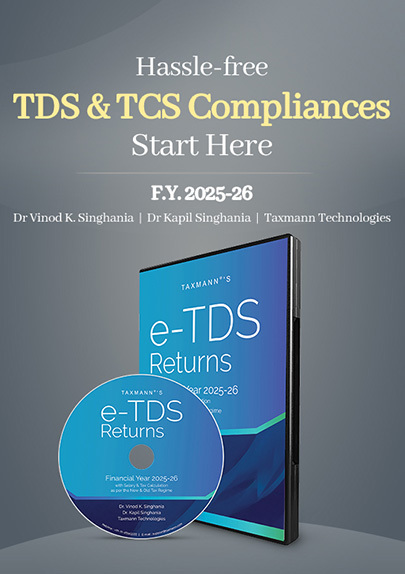Company is entitled to dep. on increased value of plant & machinery arising out of exchange rate fluctuations: HC
- Blog|News|Income Tax|
- 2 Min Read
- By Taxmann
- |
- Last Updated on 14 January, 2022

Case Details: Ispat Alloys Ltd. v. DCIT - [2021] 133 taxmann.com 370 (Orissa)
Judiciary and Counsel Details
-
- Dr. S. Muralidhar, CJ. and A.K. Mohapatra, J.
-
Sunil Mishra, Adv. for the Appellant.R.S. Chimanka, Sr. Standing Counsel for the Respondent.
Facts of the Case
Assessee filed its return of income for the Assessment Year 1994-95. Pursuant to a notice issued under sections 142(1) and 143(2), the assessee appeared before the Assessing Officer (AO) and claimed depreciation allowance on the increased cost of the plant and machinery due to exchange fluctuations. AO rejected the claim.
However, the CIT(A) allowed the claim in respect of the additional claim for depreciation allowance. On AO’s appeal, the Tribunal ruled that the actual cost in the instant cases can be quantified at the time of actual payment and not on the accrual basis. Thus, it reversed the order of CIT(A). Aggrieved-assessee filed the instant appeal before the High Court.
High Court Held
The High Court held that in the case of New India Industries Ltd. [1993] 203 ITR 933, the Gujarat High Court held that when the assessee purchased assets at a price, its liability to pay the same arose simultaneously. Merely because the said liability was to be discharged in instalments, it could not be said that the liability did not exist or accrue till the instalments became due and payable.
Thus, the contention raised by the revenue that the liability to pay the price of the asset arose only when the instalments became due and payable cannot be accepted. Thus, the assessee would be eligible for depreciation on assets resulting from additional liability arising from the exchange rate fluctuation.
The ruling pronounced by the Gujarat High Court is inconsistent with the other rulings delivered by the various other High Courts. Further, the Dept. also failed to cite any decision contrary to such rulings. Thus, the assessee was entitled to depreciation on the increased cost of plant and machinery on account of foreign exchange rate fluctuations.
Case Review
-
- ITAT, Cuttack in IT Appeal No. 2/CTK/98, dated 30-9-2002 (para 11) reversed.
- New India Industries Ltd. v. CIT [1993] 203 ITR 933 (Guj.);
- CIT v. Kanoria Chemicals & Industries Ltd. [1994] 74 Taxman 13/207 ITR 718 (Cal.);
- CIT v. Hindustan Aluminium Corpn. Ltd. [1994] 74 Taxman 139/207 ITR 670 (Bom.) (para 10) and
- CIT v. Arvind Mills Ltd. [1992] 60 Taxman 192 (SC) (para 10) followed.
List of Cases Referred to
-
- CIT v. Kanoria Chemicals & Industries Ltd. [1994] 74 Taxman 13/207 ITR 718 (Cal.) (para 4)
- CIT v. Hindustan Aluminium Corpn. Ltd. [1994] 74 Taxman 139/207 ITR 670 (Bom.) (para 4)
- CIT v. Arvind Mills Ltd. [1992] 60 Taxman 192 (SC) (para 4)
- New India Industries Ltd. v. CIT [1993] 203 ITR 933 (Guj.) (para 9).
Disclaimer: The content/information published on the website is only for general information of the user and shall not be construed as legal advice. While the Taxmann has exercised reasonable efforts to ensure the veracity of information/content published, Taxmann shall be under no liability in any manner whatsoever for incorrect information, if any.

Taxmann Publications has a dedicated in-house Research & Editorial Team. This team consists of a team of Chartered Accountants, Company Secretaries, and Lawyers. This team works under the guidance and supervision of editor-in-chief Mr Rakesh Bhargava.
The Research and Editorial Team is responsible for developing reliable and accurate content for the readers. The team follows the six-sigma approach to achieve the benchmark of zero error in its publications and research platforms. The team ensures that the following publication guidelines are thoroughly followed while developing the content:
- The statutory material is obtained only from the authorized and reliable sources
- All the latest developments in the judicial and legislative fields are covered
- Prepare the analytical write-ups on current, controversial, and important issues to help the readers to understand the concept and its implications
- Every content published by Taxmann is complete, accurate and lucid
- All evidence-based statements are supported with proper reference to Section, Circular No., Notification No. or citations
- The golden rules of grammar, style and consistency are thoroughly followed
- Font and size that’s easy to read and remain consistent across all imprint and digital publications are applied



 CA | CS | CMA
CA | CS | CMA
